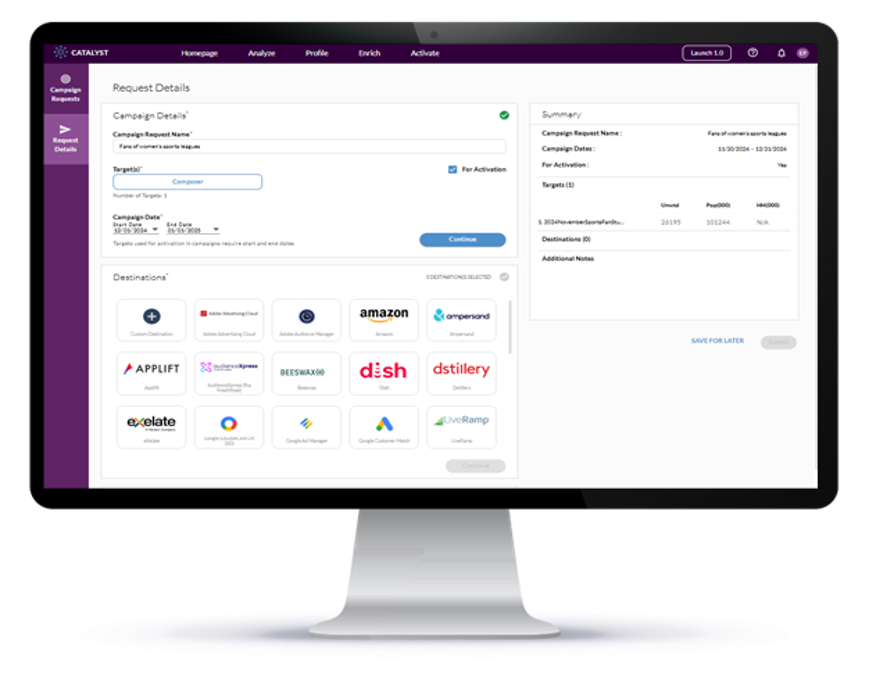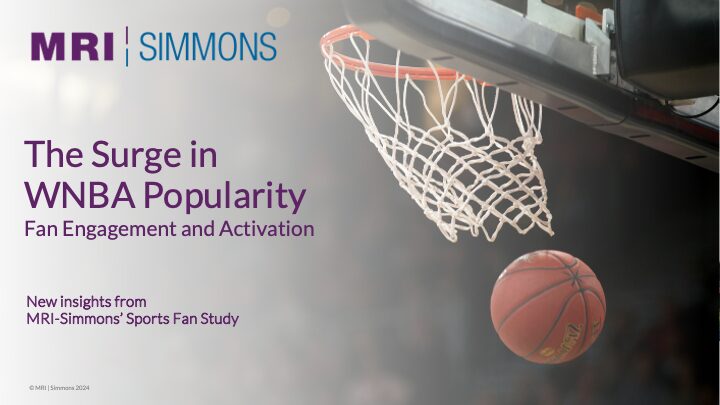Unlocking the Potential of Women’s Sports Fans for Advertising Success
Over the past year, women's sports have experienced a remarkable surge in popularity, capturing the hearts and minds of fans across the nation. 23% of American adults are more interested in women's sports now than they were last year. This growing interest is driven by several factors: 42% of these fans are impressed by female athletes breaking records, 39% find female athletes inspiring, and 32% attribute their increased interest to additional TV promotion. This trend is more than just a passing phase or “The Caitlin Clark Effect”; it's a movement that advertisers should not overlook.
The visibility and achievements of female athletes are at the forefront of this rise. With 29% of those more interested in women's sports recently discovering a new sport or female athlete they like, it's clear that these athletes are making a significant impact. Influencers are also playing a crucial role, with 26% attributing their interest to the influencers they follow. Brands that support female sports are reaping the benefits, as 22% of fans credit their favorite brands for their increased interest. This heightened curiosity and attention has translated into action, with 57% of these Americans having watched a women's sports game or event on TV and 35% following female athletes on social media. The ripple effect of this engagement is undeniable.
The fan base for women's sports is diverse and rapidly expanding. 30% of American adults are fans of the Women's National Basketball Association (WNBA), while 22% are fans of the Ladies Professional Golf Association (LPGA) and the National Women's Soccer League (NWSL). Even the Professional Women's Hockey League (PWHL) has a solid following, with 18% of American adults as fans. Looking at fans of these women’s sports leagues, 53% are men, disproving that advertisers must target women to reach these audiences. In fact, these fans are 18% more likely to be Gen Z, 25% more likely to be Black, and 11% more likely to be single than the average sports fan.
Fans of these women’s sports leagues are particularly valuable to advertisers due to their engagement with sports content and purchasing behavior. They are 51% more likely to place a legal sports bet than the average sports fan, with 27% having placed a legal sports bet in the past year. Additionally, 96% notice advertising in sports content, and 70% have streamed sports in the past year. This makes them 21% more likely to stream sports than the average sports fan, providing multiple touchpoints for brands to connect with them. 34% are streaming sports on ESPN+ (Index 199 to total sports fans), 30% on Prime Video (193), and 30% on Netflix (208).
Moreover, women's sports fans show strong brand loyalty and responsiveness to sponsorships. 50% of fans are more likely to buy brands that teams or athletes use or wear, and 63% are more likely to notice a brand if they sponsor their favorite athlete, team, or league. They are 23% more likely than the average sports fan to notice a brand sponsor of their favorite athlete or team, and 47% believe that loyalty to their favorite team means supporting their sponsors no matter what. This level of brand loyalty and engagement makes women's sports fans a highly attractive target for advertisers looking to build strong, lasting connections with their audience.
The rise in interest in women's sports presents a golden opportunity for advertisers. The passionate and engaged fan base, combined with their strong brand loyalty and responsiveness to sponsorships, makes them an ideal target for advertising campaigns. By aligning with women's sports, brands can not only reach a growing and diverse audience but also build meaningful connections that drive long-term loyalty and support.
Through MRI-Simmons' activation solution, ACT, marketers can leverage trusted and nationally representative data to target and reach fans of women’s sports leagues. Curate your audience with over 60,000 consumer elements: 1000+ attitudes and opinions, 6500+ brands in 1000+ product categories; and 90+ proprietary segments. Then, activate your audiences via the DMP, DSP, SSP, MVPD, or programmer of your choice.





